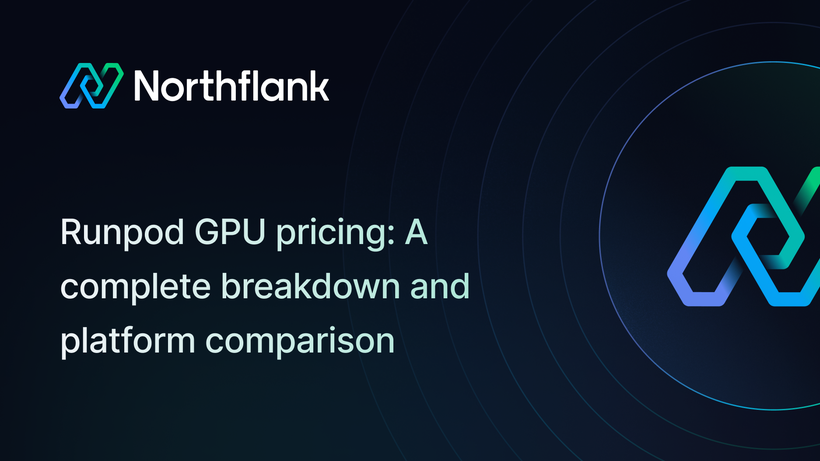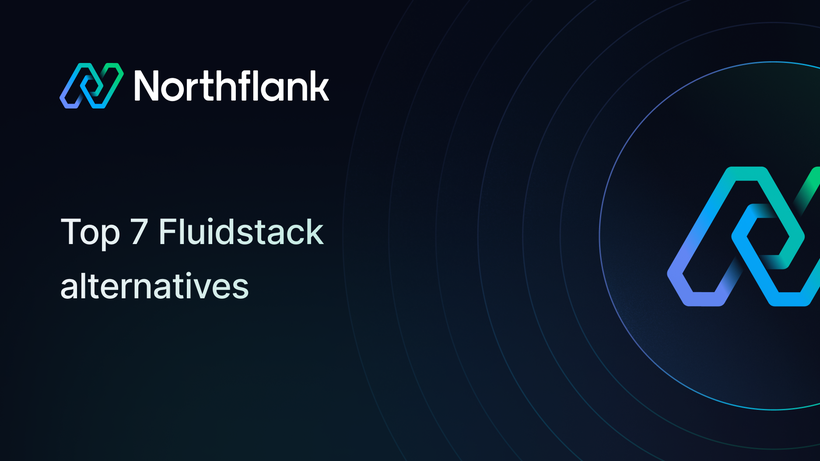

B200 vs H200: Best GPU for LLMs, vision models, and scalable training
The H200 is NVIDIA’s most capable Hopper-based GPU yet. It builds on the H100 by introducing faster memory and better throughput, making it ideal for teams deploying large language models or running high-speed inference at scale.
The B200, on the other hand, represents an entirely new generation. Built on the Blackwell architecture, it is designed from the ground up for training trillion-parameter models, scaling across dense GPU clusters, and supporting next-generation AI systems with higher context and multi-modal complexity.
In this guide, we’ll compare the two GPUs across performance, architecture, and practical deployment to help you choose the right one for your workload.
If you're running or planning large AI workloads in the cloud, Northflank gives you fast access to the right GPUs, without long-term commitments, at affordable prices.
If you're short on time, here’s how the B200 and H200 compare side by side:
Looking for B200 or H200 capacity? These GPUs can have limited availability. If you need guaranteed access or have specific capacity requirements, request GPU capacity here.
| Feature | H200 | B200 |
|---|---|---|
| Architecture | Hopper | Blackwell |
| Memory Type | HBM3e | HBM3e |
| Tensor Cores | 4th Gen | 5th Gen |
| Transformer Engine | Single | Dual |
| Max Bandwidth | ~4.0 TB/s | ~4.8 TB/s |
| Form Factor | SXM | SXM |
| FP8 Support | Yes | Yes (optimized) |
| NVLink | NVLink 4 | NVLink 5 |
| CUDA Compatibility | CUDA 12.2+ | CUDA 12.4+ |
| Cost on Northflank (Aug 2025) | $3.14/hr | $5.87/hr |
| Ideal For | Inference, fine-tuning, broad compatibility | Large-scale training on B200 clusters, foundation models, multi-node pipelines |
💭 What is Northflank?
Northflank is a full-stack AI cloud platform that helps teams build, train, and deploy models without infrastructure friction. GPU workloads, APIs, frontends, backends, and databases run together in one place so your stack stays fast, flexible, and production-ready.
Sign up to get started or book a demo to see how it fits your stack.
The B200 is NVIDIA’s most powerful GPU available to developers today. It uses the new Blackwell architecture and is optimized for training the largest models we’ve seen yet. This includes GPT-style models with longer context windows, large batch sizes, and experimental transformer architectures with growing memory and compute demands.
With fifth-generation tensor cores and dual transformer engines, the B200 pushes FP8 performance to a new level. It also ships with 192 GB of HBM3e memory and 6.0 TB/s bandwidth, giving it enough headroom for memory-intensive workloads like vision-language models or retrieval-augmented generation.
What makes B200 especially capable is how well it scales across multi-GPU environments. With NVLink 5, you can achieve faster inter-GPU communication, which is critical for dense clusters and distributed training.
The H200 is the most advanced Hopper GPU yet. It improves on the H100 by using newer HBM3e memory and increasing total VRAM to 141 GB, which allows for larger batch sizes and higher throughput during inference.
For teams running open-source LLMs, doing model distillation, or deploying AI services with high QPS targets, the H200 offers excellent performance without requiring a new software stack or infrastructure overhaul.
It supports the same fourth-generation tensor cores as H100, and like all Hopper GPUs, it works well with existing CUDA and PyTorch workflows. For teams that already run on H100, moving to H200 is a seamless upgrade that provides meaningful speedups.
Now that we’ve looked at how the B200 and H200 perform on their own, it’s worth breaking down what actually makes them different. The two GPUs aren’t just built for different generations of hardware; they reflect a shift in how teams train and scale deep learning models. Here's how they stack up across architecture, memory, precision, and deployment.
The B200 introduces NVIDIA’s new Blackwell architecture, which features dual transformer engines and fifth-generation tensor cores. These upgrades are especially useful for long-context models and workloads with heavy token parallelism.
The H200 still uses Hopper, which supports one transformer engine per core and slightly older tensor hardware. It remains strong for mainstream training and inference but does not scale as efficiently for newer model classes.
Both GPUs use HBM3e, but the B200 includes 192 GB compared to the H200’s 141 GB. It also runs at higher speeds, delivering 6.0 TB/s of bandwidth compared to H200’s 4.8 TB/s. This gives B200 a real advantage when training large models or handling multi-modal inputs.
The B200 uses NVLink 5 with 1.8 TB/s node-to-node bandwidth. That means it communicates faster with other GPUs and is better suited for large-scale distributed training setups. The H200 uses the same 900 GB/s NVLink as the H100, which still performs well but does not match the B200 at cluster scale.
Both GPUs ship in SXM format, which is standard for high-end data center deployments. The B200 demands more power and newer infrastructure, while the H200 fits more easily into existing setups that previously ran H100s.
The B200 runs best with the latest CUDA releases (12.4 and above) and software like cuDNN 9 or Triton with Blackwell-specific optimizations. The H200 runs on current Hopper-compatible stacks, making it easier to deploy immediately without tooling changes.
In MLPerf Training v4.1, NVIDIA’s B200 showed clear per-GPU gains over the H200 across large-scale model benchmarks. On tasks like GPT‑3 training and LLaMA fine-tuning, the B200 completed jobs in nearly half the time compared to H100 and H200-based systems.
| Workload | H200 Performance | B200 Performance | Relative Speedup |
|---|---|---|---|
| GPT‑3 175B Pre-training | Baseline | ~2× faster | 2.0× |
| LLaMA 70B LoRA fine-tuning | Baseline | ~2.2× faster | 2.2× |
These numbers are based on MLPerf’s official v4.1 results. NVIDIA detailed the B200’s performance in their blog coverage of the Training v4.1 results and Inference v5.0 benchmarks.
The B200 gains come from newer hardware like fifth-generation tensor cores, faster HBM3e, and dual transformer engines. It also benefits from NVLink 5 for faster GPU-to-GPU communication, which matters in large model training. H200 remains strong for fine-tuning and inference, but doesn't scale as aggressively in multi-node setups.
At Northflank, you can launch H200 and B200 instances directly in the cloud. We offer flexible pricing with no lock-in, so you can scale up or down depending on your training cycle.
As of August 2025:
- H200: $3.14 per hour
- B200: $5.87 per hour
H200 gives teams a great middle ground for performance and cost. The B200 costs more but can significantly reduce training time for large models, making it a better fit for heavy experimentation or foundation model teams.
If you are fine-tuning models, building inference pipelines, or optimizing costs while maintaining speed, the H200 is the most practical choice. It is stable, available, and performs well across most workloads.
If your focus is on pushing model boundaries, scaling training pipelines, or preparing for multi-modal, long-context LLMs, the B200 gives you the horsepower and memory bandwidth to go further, faster.
| Use case | Recommended GPU |
|---|---|
| Fine-tuning LLMs | H200 |
| High-throughput inference | H200 |
| Long-context model training | B200 |
| Multi-modal foundation models | B200 |
| Multi-GPU scaling with NVLink | B200 |
| Seamless Hopper upgrades | H200 |
The B200 marks a major leap in AI hardware performance. It gives teams building the next generation of models the tools they need to scale training faster and work with more ambitious architectures.
But the H200 still plays a vital role. It balances cost, compatibility, and performance, making it the best option for teams who want to ship quickly without retooling their infrastructure.
At Northflank, we help teams deploy and scale AI workloads with access to cutting-edge GPUs, built-in orchestration, and seamless cloud integrations. You can launch your first instance in minutes or book a quick demo to see how it fits into your stack.


